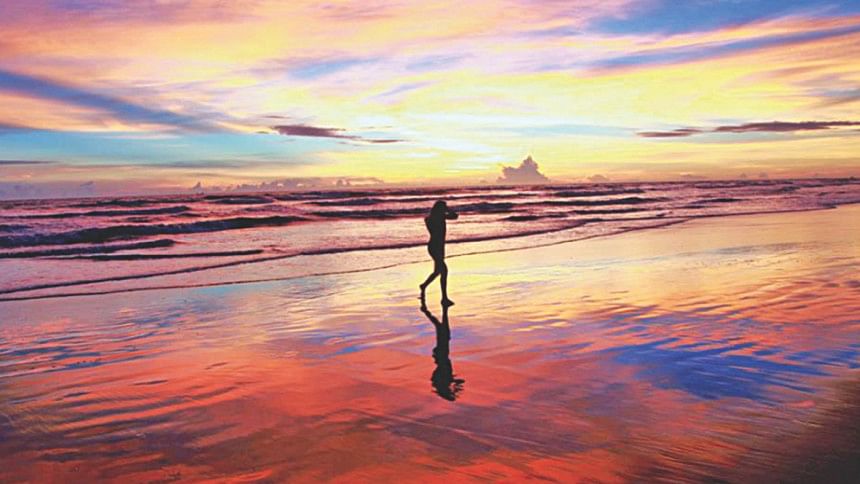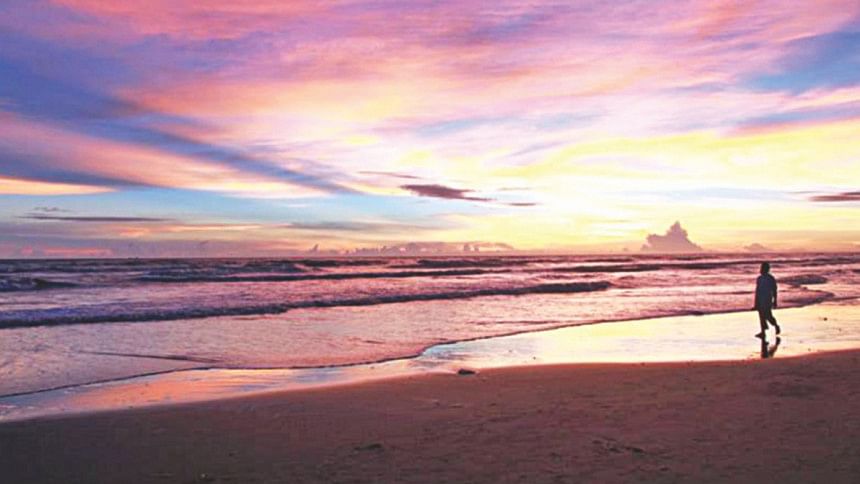The beauty within

Outside of Bangladesh, very little is known about the wonders its holds. The most popular place in Bangladesh amongst outsiders is Dhaka, and not for good reason. On my recent trip to China, an American journalist showed interest in Bangladesh, asking me about different sites inside Dhaka, the behaviour of Dhakaites, the delicacies, the roads. I remember replying, “Don't judge Bangladesh based on Dhaka alone, you wouldn't judge China based on only Beijing. The real Bangladesh lies outside the concrete jungle, where the green grass, the red sun and the humility of the people make up the country we love.”
This year is perfect for Bangladesh to attract attention towards the abundant natural beauty it has been blessed with. Everyone talks of Sylhet, Chittagong and Bandarban, but they do not truly know what magic lies within. Waterfalls au natural, bountiful greenery, humble locals, hidden mysteries that lurk within the surroundings, waiting to be uncovered—beautiful Bangladesh has it all.
Sylhet, known mostly for the its endless tea gardens, has many a place to replenish an adventurer's heart. Located in the North-East of Bangladesh along the banks of the river Surma, Sylhet can boast of some of the most noteworthy sites in the country. The water in Ratargul Swamp Forest comes from the contiguous Goain River. During the rainy season, this evergreen forest is submerged in 20 to 30 feet of water in some parts. Other parts of the forest get so narrow that you can't go even pass by boat. The beauty of this forest truly comes to life during monsoon. Most of the trees that grow here are Pongamia pinnata (koroch). The more time you spend, the more will you amazed. The trees, the water, the boat rides, everything creates an amazing environment, and a tour is bound to give you a surreal feeling.
Sylhet's Lawachara National Park is a semi-evergreen forest covering approximately 12.5 sq. km of area. The Lawachara Rain Forest is home to an assortment of plants, birds and animals, and is considered to be of great ecological importance. One of the attractions is the white-faced gibbons. Birds such as bee-eaters, strikingly colourful parrots and owls can also be spotted in the tree-tops. Botanists should note to note that the incredibly rare chloroform tree can be found here—theonly one in Asia.
Sylhet's Khadimnagar National Park, previously known as Khadimnagar Reserve Forest, is home to some of the most remarkable biodiversity. One of the most important nature reserves of the country, it is a mixed semi-evergreen and evergreen forest, comprised of floral resources, Non-Timber Forest Product (NTFP) resources, timber resources, bamboo, cane, etc. It is one of the must-see destinations in Sylhet.

Our port city, Chittagong, has always been a favourite, even amongst the locals. The graves of the soldiers who fought in the Second World War can be found in Chittagong's war cemetery. In this quiet, picturesque cemetery within the city, over 700 soldiers from England, Australia, Canada, New Zealand, India, Myanmar, East and West Africa, Netherlands and Japan who met their end on the Myanmar front, lie buried in eternal peace.
Foy's Lake, the man-made lake in Chittagong created in 1924, was created from the water from the stream that flows down from the hills in the northern region of the port city. The purpose of creating an artificial lake was to provide water to the residents of the railway colony.
Parki beach is situated about 8 km from Anwara thana and about 28 km from Chittagong city. Anwara thana is linked by road to the Chittagong-Cox's Bazar highway and is easily accessible from all over Bangladesh, including Dhaka city. The beach is located 8 km away from the Chatri Choumuhoni point on this highway. As the beach is situated at the Karnaphuli river channel, visitors can view both the Karnaphuli river and the sea at the same time. Tourists enjoy the views of big ships anchored at the outer anchor, fishermen throwing their lines into the sea, the sunset, crabs of various colours on the beach, and the overall relaxed atmosphere.
Sundarban is the world's biggest mangrove forest, located in southern region of Bangladesh and a small part of Eastern India. Sundarban is a vital part of Bangladeshi tourism. A large number of foreigners come to Bangladesh every year only to visit this unique mangrove forest. Besides, local tourists also go to visit Sundarban year in and year out. The Sundarbans cover approximately 6000 sq. km and are endowed with rich flora and fauna. It is the perfect place to see and photograph the exquisite and rare Royal Bengal Tiger if one has the time to wait in the middle of the forest. There are in fact a good number of tigers in the Sundarban. Majestic spotted deer are easier to find. The wildlife of the Sundarban is truly inexhaustible.
With such outstanding sites hidden up our sleeves, Bangladesh has always had the potential to be one of the most attractive tourist sites in the world. With 2016 named the year of tourism, Bangladesh is more than prepared to welcome guests from all corners of the world with the hospitality that nature itself has to offer, let alone everything else. This is our year; this is the year we unleash to the rest of the world the beauty within.
The writer is a feature writer for the Star Weekend, The Daily Star.

 For all latest news, follow The Daily Star's Google News channel.
For all latest news, follow The Daily Star's Google News channel. 



Comments